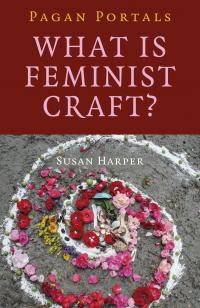
There is a very material link to Dion Fortune at the foot of Glastonbury Tor. In 1924 she established a sanctuary for pilgrimage and magical work in an old orchard there, close to the Chalice Well. Chalice Orchard, as she named the site with its cluster of hastily-erected huts, was at the heart of her activities for many years. Nowadays, the site of Dion Fortune's temple on part of the old Chalice Orchard site is occupied by a guest house called Berachah. Maybe that's where we'll stay next time we visit Glastonbury.
After all, one of the key reasons for our journey following in Fortune's footsteps was to work on attuning our own imaginations to the "spirit of place", the genius loci, that was and remains a vital spark within her key magical workings. This is something one can't acquire from a book - the feeling, the atmosphere, the energy of a specific location on the material plane. It's necessary to be there, to experience it all in the flesh (so to speak), in the air, in the textures and sights, and sounds and scents that are integral to that place.
Some of the magic that Dion Fortune and her co-workers wove in these landscapes have entered occult legend. The Magical Battle of Britain (edited by Gareth Knight), gathers together meditations and rituals that allegedly helped stem the advance of the Nazi war machine early in World War Two. Some, such as the Glastonbury Tor Meditations, can be found online nowadays. Many, if not all, are still relevant. It's worth considering that although Nazi warplanes are not flying across the skies above Britain, fascist movements (most often tinged, at the very least, with an aggressive and militant evangelical version of Christianity) are definitely on the rise across Europe and beyond.

Also at the foot of Glastonbury Tor, close to the site of Chalice Orchard, there are two springs. The best-known is Chalice Well with its red-tinted waters. Mythologically, Chalice Well has been claimed as the resting place of the Holy Grail. Again, this is an area of myth where the Christian influences mingle with much older Pagan mysteries. The best way to find what is valuable is not so much through intellectual research as through direct experience. Another book has to be recommended here, for those who visit Chalice Well and feel drawn to the Grail Mysteries: The Grail Seeker's Companion, by John Matthews and Marian Green.
I have to say that I found our own visit to the Chalice Well Gardens rather disappointing. I'll admit straight away that this is probably unfair. The Trust that owns and preserves the site - a registered charity - and the staff and volunteers who run and maintain it, all do a fantastic job. They also ensure that Chalice Well is welcoming to people of all paths (and none). If I was able to attend some of the events hosted there to mark, for example, their "customised" Wheel of the Year, I may well have a very different experience. But the inevitable admission charges - inevitable because in this day and age without grants or subsidies every charity must struggle to maintain itself without any other assistance - and the promotion of Chalice Well on a heavily-trodden Glastonbury tourist trail, seem to me to undermine the fundamental spirit and intent of a sacred site.
I've already mentioned the tourism factor in relation to the Tor. It's become inescapable in Glastonbury. No doubt that's good for business, but it can become frustrating for those who visit with the intent of doing something deeper than taking selfies at various historical monuments. Where Chalice Well Gardens have things right is that they've limited the impact by laying down rules to control it - no photography without prior permission, no smoking, and no mobile phones, for instance. The resulting hush makes for a pleasant break from the sort of hubbub that can confront the visitor at other Glastonbury sites, although it's a shame that has to be enforced.
Close by, you can find the other spring, known as the White Spring. This is tucked away in a chamber close to the foot of the path that leads up the Tor, on Well House Lane. The spring itself is found within a space originally built by the Victorians as a well house, and that has more recently been opened up as a temple. There are pools that visitors can actually enter, and a number of shrines to various deities. However, this was also rather a crowded place when we turned up on a Friday afternoon. That does impact on the atmosphere (and I'd think it would be a very atmospheric chamber without the tourists) - not to mention that there was absolutely NO way that I was going to strip off and plunge into one of the pools in front of all the tourists, however much one of the volunteer attendants was determined to encourage that!
The White Spring is entirely new to me, it wasn't established on my previous Glastonbury visit and the crowd wasn't really conducive to meditation, let alone any other sort of magical work, this time. I imagine there's a very different feel to the chamber when it's closed to the general public and in use as a space for meditation and ritual. I'd recommend checking for such events and arranging to participate, in order to get a proper sense of the site. Sadly I wasn't staying in Glastonbury long enough to do that myself, on this occasion. What I do find interesting though is the polarity suggested by red spring (Chalice Well, with its high iron content) and white spring (calcium content) emerging so close to one another. That's something worth working around and exploring further.
Categories:
0 comments on this article






